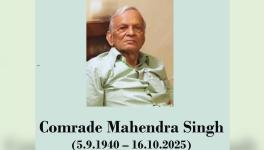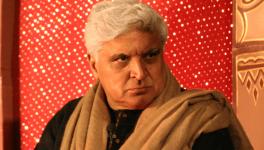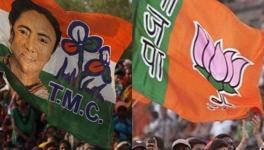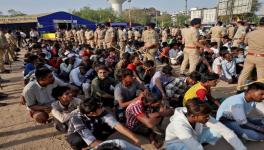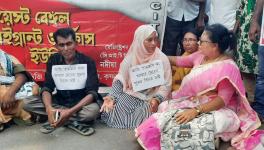Elections 2019: Left’s Campaign For Unity Resonates in Racially Turbulent Darjeeling
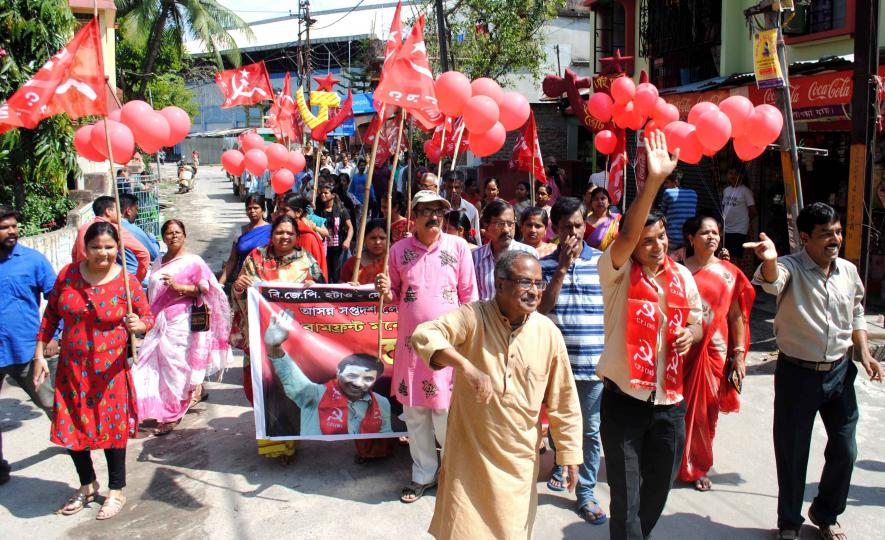
Darjeeling: The elections campaign in this hilly Lok Sabha constituency in North Bengal has reached a crescendo. While the Bharatiya Janata Party (BJP) is pursuing a chauvinistic campaign, the Trinamool Congress (TMC), too, is facing the heat from the people who feel “betrayed” by its “autocratic and divisive” policies, while the Communist Party of India (Marxist) is focusing on the unity of the hill people and pledging its commitment to economic and social development of the region.
The region has only one Lok Sabha seat with an electorate of 14,37,126, which includes vast tribal, Scheduled Caste and general population. The CPI(M) candidate, Saman Pathak, has a history of being involved with the struggles of tea garden workers in Darjeeling. He is the son of veteran communist leader Ananda Pathak.
Talking with Newsclick, Saman Pathak related how as a 10-year-old , he had to escape from his house in Sonada in 1986 at the height of Gorkhaland agitation, as their home in Sonada was set on fire by secessionist forces. “Our view is that only the Sixth Schedule of the Constitution can solve the problems of the hill people. Statehood won’t be able to guarantee development of the hill people,” he said.
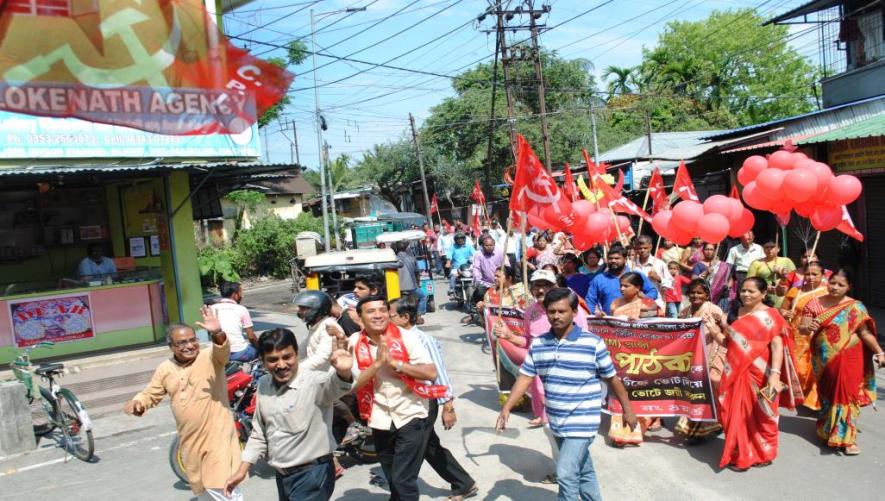
According to him, the “racial overtures of the secessionists in the hills have been buoyed by the autocratic constitution of 16 different ethnicity-oriented boards by West Bengal Chief Minister Mamata Banerjee, who forcibly using her administrative power, has also exiled the top brass of the Gorkha Janmukti Morch (GJM) leaders, who were erstwhile leading the secessionist movement in the hills.”
Pathak also accused the TMC of “engineering defection of several top GSJM leaders, as a breakaway fraction of GJM, which supported her party’s candidate , Amar Singh Rai ,till recently a GJM legislator.”
On April 15, GJM conducted a show of strength in the Chawkbazar area where about 15,000 Morcha activists participated, and advocated Gorkhaland or separate statehood, which is being backed by some hill leaders as well by the BJP candidate, who is a corporate tycoon from Manipur with Nepalese ethnicity. He is the owner of the Surya group of industries with assets of over Rs 1,000 crore.
Interestingly, BJP has adopted an “opportunist twin strategy of advocating a unified Bengal in the plains of the state, throughout North and South Bengal, while in Darjeeling, the party is fanning racial sentiments and advocating for separate statehood”, Pathak said.
“Over a million tea workers and their dependants constitute the electorate in the parliamentary segment of Darjeeling, and Daju (brother) Saman Pathak is a big factor this time,” said Mahendra Gurung, once considered to be ‘Bimal Gurung’ (GJM leader) of Bagdodra.
This is the first time in the last 30 years that CPI(M) has forced its way into the hills. CPI(M) general secretary Sitaram Yechury held a huge rally on Saturday in Chawkbazar, attended by people mostly from the working class and tea plantation workers from various tea estates of the hills, with the slogan of voting for Hasua Mardi Bartalo (hammer, sickle and star) renting the air, the electoral symbol of CPI(M).
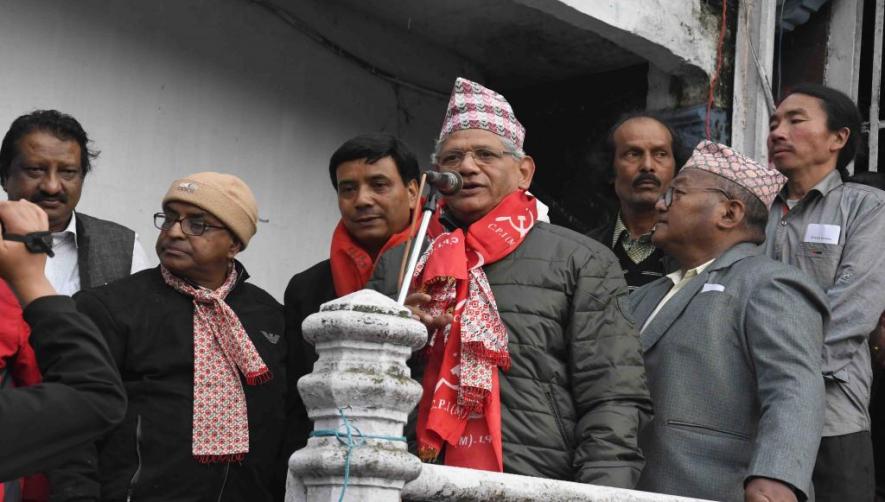
From Ghoom Bustee to Gurung Bustee area, CPI(M) posters can be seen everywhere. A breakaway group of CPI(M) , led by former MP, RB Rai, also seems to have lost steam after supporting Sangh Parivar in this election.
CPI(M), which was the dominant party in the hills before 1986 when the Gorkhaland agitation started, still commands respect in the area, as leaders are known for their communist ethics and austere lifestyle, such as Ratanlal Brahmin and Ananda Pathak. These leaders are still fondly remembered by elders like retired armyman Shivakumar Rai of Gandhi Gote and Meena Yulo of Chawkbazaar, whose makeshift shop sells shawls and cardigans.
“The racial sentiments being fanned by GJM and the opportunism of BJP and TMC has peeved a large number of hill people,” said Pathak.
In the plains of Siliguri, in the three Assembly segments of Siliguri, Matigara and Naxalbari , and in Chopra, the BJP-GJM combine will fare very badly, say some political observers. Interestingly, after 2014, TMC has not won a single election in the plains. Last November, to wrest a panchayat samity in Naxalbari, the TMC allegedly used police force to arrest CPI(M) secretariat member and Centre of Indian Trade Union leader Goutam Ghosh and kept him imprisoned for 71 days on false charges.
Siiliguri Mayor Ashok Bhattacharya, who is a well-known figure in Siliguri and North Bengal, said this time there would be a three-cornered contest in the hills, which has changed the earlier poll calculation. CPI(M) commands most of the votes in the plains for its principle stands, and is now gaining support in the hills, too, he said.
On the show of strength by GJM, Manjula Tamang and Mina Gurung, the only two woman central committee members of GJM who are leading the agitation in hills in the absence of exiled GJM leader Bimal Gurung, told Newsclick, “As central committee members of GJM, the show of strength by GJM was necessary to show that gaddar (traitor) Morcha leader Binay Tamang, now the Gorkhaland Territorial Administration chief with Mamata Banerjee’s help, who the real power centre in the hill is?” Both the women GJM leaders have multiple warrants issued in their name.
Interestingly, in the Naxalbari region, in the famous Totaramjote and Kaluajote , this reporter was privy to election meetings being conducted at night by the CPI(M). In one such meeting, the mother of Md Farhad, a TMC “hooligan” and big-wig student leader of Naxalbari college, told us that this time she would support the party of Jyoti Basu (former West Bengal CM and CPI)M) leader), as experience had taught her that peace, unity and economic uplift was the necessity of the hour in Naxalbari, which can fall prey to racist or communal politics if TMC or BJP win.
Standing by the side of river Bataria besides Kamruddin Setu, a bridge named after Md Kamruddin , a respected CPI(M) leader who was a leader of, his grandson Rabiull Islam, a CPI(M) leader and former panchayat pradhan, echoed the need for communal unity and development.
Babai Roy of Rajbangshi community, in another meeting in Matigara area, said that only the “red flag supports real development of all ethnic groups”, adding that Prime Minister Narendra Modi and West Bengal CM “were students of the same pathashala (village school ) of Rashtriya Swayamsevak Sangh. “
Last Saturday, Chopra Assembly segment, where umpteen Left supporters have been allegedly killed by TMC in the past five years, witnessed a huge public meeting by Left Front Chairman Biman Basu and Siliguri Mayor Ashok Bhattacharya. On Sunday, too, Siliguri witnessed a huge rally of over 30,000 people. “The march of red flag bearers has electrified the hills,” said Sunil Pradhan, a government employee from Kalimpong.
Get the latest reports & analysis with people's perspective on Protests, movements & deep analytical videos, discussions of the current affairs in your Telegram app. Subscribe to NewsClick's Telegram channel & get Real-Time updates on stories, as they get published on our website.











